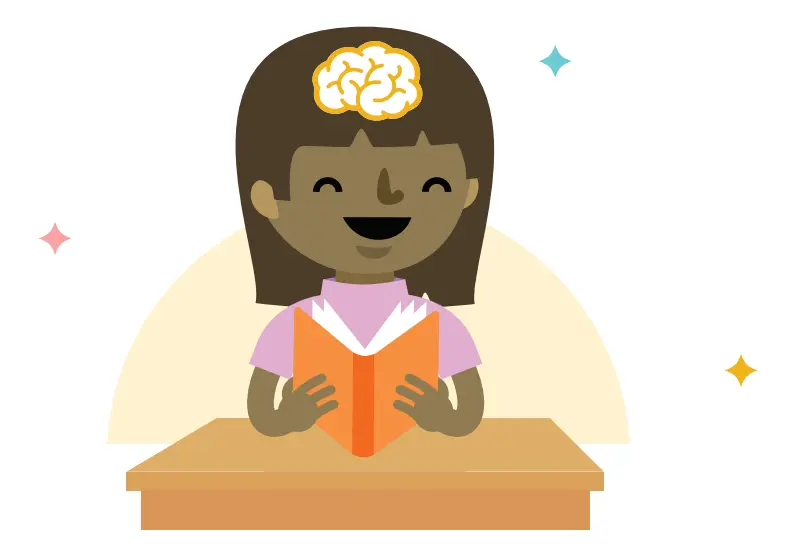The Research Behind eSpark
eSpark meets all requirements for an evidence-based intervention under ESSA. From the moment students first log into eSpark, everything they interact with is based on rigorous educational research. Our product design and playfully personalized curriculum are closely aligned with the science of how we learn.
Evidence-based certification
eSpark has been awarded the Research-Based Design Product Certification by Digital Promise. This certification recognizes the link between our curriculum design and established bodies of research on how students learn.

Theory of Learning
eSpark’s unique evidence-based curriculum and innovative design are predicated on our Theory of Learning. This guidepost is grounded in seven research-driven elements that have all been directly linked to improved student learning outcomes.
Read: The 7 Key Elements of eSpark’s Theory of Learning →
Differentiation
Students begin with a placement quiz to find their individual learning level, or we use your district’s 3rd-party NWEA MAP or Renaissance Star data. Research shows that differentiated instruction leads to greater student reading growth.
Adaptivity
eSpark’s adaptive learning tools consistently adjust within the student’s Zone of Proximal Development. One study found that students who receive adaptive testing paired with individualized instruction show significantly better performance.
Student Engagement
eSpark is the students’ choice for a reason. Students are asked to provide feedback with a thumbs up or down after every activity. If an activity’s approval rating drops below 85%, we replace it. This is truly student-centered learning.
Direct Instruction
eSpark’s Framing Videos and instructional videos are woven between practice activities to ensure systematic and explicit instruction of all skills, with scaffolding to support the transition to independent practice.
Practice
eSpark’s curriculum includes monitoring comprehension, asking questions, summarization and graphic organizers. Each of these strategies are proven to lead to better retention and learning transfer, as well as overall improvements in comprehension.
Assessment and Feedback
eSpark students are permitted multiple attempts on formal formative assessments and challenges. Real-time feedback is a cornerstone of certain eSpark activity types.
Reflection and Synthesis
Students are given the opportunity to summarize and reteach the concept they learned at the end of every Quest. Prompt repetition and opportunities for scripted reflection help students maximize retention and skill transfer.
Is eSpark aligned with the science of reading?
Yes! From explicit, systematic instruction in all five essential components of reading to an AI-powered take on student choice and decodable readers, eSpark is the perfect fit to complement your science of reading efforts.

How effective is eSpark’s fun, personalized approach to adaptive learning?
- More than 2,000,000 math and reading standards mastered by students every school year
- The average student masters 3 standards per month in eSpark
- Students who use eSpark grow 1.5 times faster than their peers on independent benchmark tests, including NWEA’s MAP Growth
Put eSpark to the test
Is instructional ROI a priority for you? The results speak for themselves.



